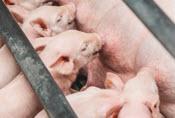
Transitioning from weekly farrowing to batches could benefit pig health, workflow and biosecurity.
By Jackie Clark
Most pig farms across Canada run on a continuous schedule: breeding, farrowing, processing piglets, and weaning all happen each week. Many producers find success and satisfaction in this steady rhythm of work.
However, batch farrowing allows for a different approach. By arranging sows in larger groups, and therefore only having farrowing at intervals of two or more weeks, farmers can take advantage of health benefits and a different division of labour.
It may not be for everyone, but “I think a lot of farmers would enjoy having batch farrowing if they got set up to do it,” Dr. Robert Friendship tells Better Pork. “Getting their head around it and getting it organized to begin is tricky.”
Friendship is a professor at the Ontario Veterinary College and swine research co-ordinator at the University of Guelph.
This month, Better Pork connects with Friendship; Dr. Blaine Tully, a partner at Manitoba-based Swine Health Professionals; as well as producers Daniel Roelands and James Hofer, to discuss some of the benefits and challenges of batch farrowing.
What is batching?
Roelands runs a 600-sow, farrow-to-finish operation in Middlesex County, Ont. He transitioned to batch farrowing eight years ago and altered his batch schedule three years ago.
“We do kind of a different-style batch than a lot of other people,” he says. “It’s a four- and five-week hybrid batch.”
Roelands used to batch farrow every four weeks, which meant weaning piglets on Monday, and then the sows would farrow the following Wednesday.
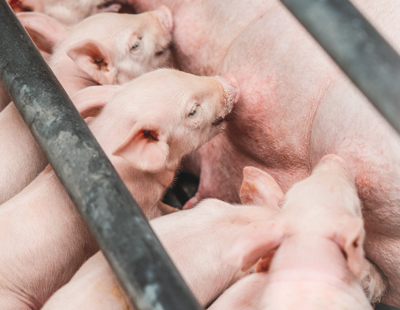
In that system, “the piglets would only be 18 days old at weaning. We wanted to wean older pigs but still get a similar number of pigs through our farrowing barn. So, we delayed that weaning by a whole week,” he explains. Now, he still weans piglets on Monday, and the next batch farrows two days later. In the new system, piglets are 25 days old at weaning.
“Since we bumped that weaning day a whole week compared to the regular four-week batch, on the fifth batch we have an extra week in there between weaning and farrowing,” he adds.
The goal of the change was to wean a heavier pig “so that they would do better in the nursery and to get the benefit of a longer lactation for the sows, too. After we switched, (sows) definitely did breed back better, and our conception rate was higher,” Roelands explains.
This is one example of how batch farrowing involves finding a system that works best for your specific farm.
Hofer farms at Starlite Hutterite Colony near Starbuck, Man.
“We have a farrow-to-finish operation with 525 sows,” he tells Better Pork. “In 2012, we made the decision to go to batch farrowing and at that time we were running 600 sows.”
Hofer, too, has changed up batch scheduling over the years.
“We started off doing a three-week batch. We had 144 crates, which we split into two blocks of 72 and those we batched every three weeks,” he explains. This meant piglets were weaned at 27 or 28 days old.
In 2018, Hofer did a partial depopulation on the farm, and transitioned to a 35-day or five-week batch, using 124 crates.
Now they wean piglets on a Monday at 28 days, and have a few days to wash farrowing crates before the next batch, he says. “Our goal is to get the sows into the crate five days before they farrow.”
Breeding occurs the Saturday after weaning, farrowing is the following week, and then there are three weeks with less hectic work in the sow barns, when Hofer can work on maintenance projects and ship pigs.
Initially, when a consultant suggested batch farrowing to Hofer, he was skeptical that the system would increase his throughput on the farm.
“Long story short, we don’t have any more pigs off-site. All the pigs are going through our barn and they’re being shipped at 10 kilograms heavier than they were before. So that is an absolute fact that you increase your throughput (with batch farrowing),” Hofer says.
Health benefits
“From a disease control strategy, we like to be able to use rooms all-in and all-out,” says Friendship. “It’s best to have the pigs all from one source.”
Farmers who batch farrow are “able to fill a whole barn with one week’s worth of pigs as opposed to taking four weeks to fill a barn,” he explains. “From a health standpoint, it’s a huge difference to continue to put pigs into the group. If disease gets started when there’s a constant continuous flow of animals, it’s like putting wood on a fire, and it keeps going.”
Tully agrees.
“The health impact is pretty big,” he says. Farmers “shouldn’t underestimate the impact that (batch farrowing) can have on a farm.”
Roelands saw some of the health benefits first-hand.
“It was a lot better … to have all the sows farrow together, and then nothing for a while,” he says. “That really helps with the scours because there wasn’t another group farrowing the following week to be passing the scour bugs back and forth.”
Hofer had a similar experience.
“The health challenges are definitely less, in the farrowing house especially,” he says. When he depopulated in 2018, he got rid of porcine reproductive and respiratory syndrome and Mycoplasma hyopneumoniae “and since then, we’ve been clean that way.”
Batch farrowing “definitely stabilizes” pig health, Hofer adds.
Labour changes
Batch farrowing changes workflow and labour requirements on the farm. Jobs are concentrated in shorter periods of time, with more downtime between busy days, Tully explains.
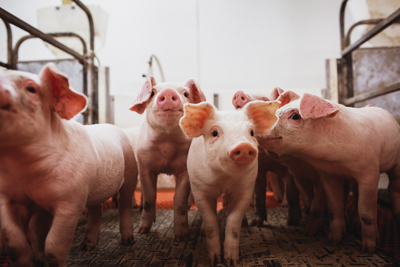
“Some producers find it much more convenient,” says Friendship. The system “works for some people who can mobilize labour during that very busy week.”
The concentration of labour may also create efficiencies for big jobs like breeding, processing piglets and vaccinations, he adds. Batch farrowing can work best for farms that employ herdspeople who are doing other jobs on the farm.
“It can be hard to keep employees busy during the slow times,” says Roelands. “You need to have other jobs for them to do.”
On the other hand, it can be advantageous for farmers who also grow crops, because during busy times in the field, much of the labour force can help with seeding or harvesting, Hofer explains. The work schedule can also work well for farmers who employ family members or other workers on an occasional, instead of full-time, basis.
The concentrated work schedule also means that farmers’ least favourite jobs come around less often.
Tully works with a producer who says “the crappy jobs still exist in batch farrowing. The nice part is that those crappy jobs only happen every five weeks, but they’re five times crappier.”
Hofer agrees.
“Sometimes, around the farm, there are jobs that you don’t necessarily like doing. But when you batch farrow, in our case every 35 days, those jobs that you don’t like only come around every 35 days,” he explains. “Granted, it’s a bigger job.”
The schedule suits the farmers who make it work.
“We wanted to be more focused on one job at a time … instead of having sows farrowing while we’re breeding and processing and doing every job at once,” explains Roelands.
With weekly farrowing, “we never really had time to take a holiday or do a big repair in the barn without feeling like the production would be struggling a little bit,” he adds. With batch farrowing “there were obvious slow times.”
Hofer uses those slower times on the farm to “schedule family time and visits or projects,” he says.
Facilities and operations
Transitioning to batch farrowing may require producers to rethink their farm setup; however, it could be to their advantage.
For smaller producers, weekly batches may be too small to fill pens, rooms or truck loads, says Friendship. Scaling batches up could allow for more efficient pig flow or justify larger purchases of inputs. For example, producers may be able to source larger volumes of feed, leading to increased convenience and cost savings.
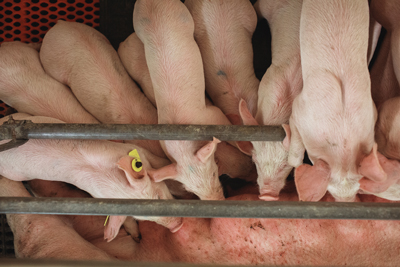
Farms in Canada are transitioning to group housing for sows, and batch farrowing may dovetail nicely with that transition.
Making the switch could “justify having electronic feeding stations or at least a large pen where the timid sows can stay away from the bossy sows,” says Friendship. “It’s much easier to handle group housing when you’ve got large pens, and it’s much more humane, I think.”
Producers should carefully assess pig flow to determine if their facilities require changes, Tully says.
“Your infrastructure may or may not be more suited to batch farrowing,” he explains. “Some of the health benefits you’ve realized because of the all-in and all-out nature of batch farrowing, might start to be lost because you’re getting creative with pig flow,” or crowding.
“You might have to do a little bit of renovation,” to avoid unintended consequences, he adds. Room dimensions, pen size and shape, and access to feed and water systems are all important considerations.
“If you think about behaviour and welfare principles, I think (batch farrowing) can lead to improvement,” Tully says. “On the other hand, if you try and squeeze pigs into an infrastructure that doesn’t lend itself to batch farrowing ... then it might actually lead to compromised welfare.”
Marketing shifts
Hog marketing has remained relatively similar for Hofer.
“It’s more concentrated into a two-week window where we’ll ship seven or eight loads,” he explains. Other weeks, he will ship just one load of pigs.
Other producers may see a bigger shift.
“Depending on how you sell and ship your pigs, this might be a great benefit that you might be able to get into markets that you couldn’t before because you never had a big enough group to sell,” says Friendship.
“For smaller producers, this gives them an opportunity to produce a big enough group that if they’re selling feeder pigs, somebody would be interested in this batch.”
Marketing opportunities for selling isowean pigs to the Midwestern United States “have made batch farrowing make a lot more sense on a lot more farms,” Tully says.
“In Western Canada where I practise, we have farm sizes that range everywhere from 250 sows to 6,000 or 7,000 sows,” he explains. “If you don’t have a marketable group that fits the U.S. finisher barn capacity where they want 2,000 or 2,500 pigs to fill their barn, you’re less marketable as a seller.”
So, producers who batch farrow can more easily produce the number of pigs buyers in the U.S. want.
“You might get a price premium or you might not have to take a price reduction because you’ve got too small of a group and your buyer is going to have to commingle with somebody else in their barn,” Tully says.
“The market efficiencies are pretty big,” he adds. By shipping larger groups of pigs less often, you reduce trucking costs.
“You can easily extrapolate that on to biosecurity,” Tully says. Less traffic and fewer trucks backing up to the barn mean less opportunity for disease to be introduced to your farm.
Challenges to overcome
Moving from weekly to batch farrowing is a learning process.
One “tricky part is handling the gilts,” says Friendship. “Gilts just tend to come into heat when they feel like it.… You have to have them all come into heat during one particular week.”
Farmers need to use commercial hormones to synchronize the gilts, he adds. Tools and expertise are available to help producers with that process.
When getting started, “you’ll disrupt the flow of pigs. There’ll be a period where you go through one group of farrowing, holding back breeding as many, and then breeding all at once,” he adds. “You won’t produce as many litters during that transition period, which has a financial impact.”
As a farmer, “there are definitely some mindset changes,” says Roelands. “We used to use a lot of nurse sows in the farrowing crates when we saw pigs falling behind. We were moving a lot more pigs around, and with a batch system you’re really kind of stuck because all the sows farrow at the same time.”
Also, “it can be mentally overwhelming during the busy times,” he adds. “You’ve got to have a light-at-the-end-of-the-tunnel mentality.”
The concentrated nature of busy times can also be exacerbated if employees fall ill or are otherwise unavailable to work.
It’s also possible to be discouraged if improvement and benefits are not obvious.
“I was a little disappointed with our nursery. I was thinking our nursery performance would have a big improvement,” Roelands explains.
However, the learning process offers incentive for improvement, because you have fewer chances throughout the year to do things well, says Hofer. “You become good at meeting your targets and ensuring you have enough sows bred.”
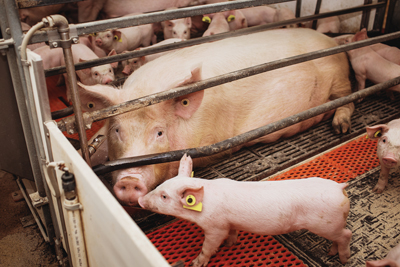
In batch farrowing, “your weaknesses are going to amplify and so are your strengths,” Hofer says. “If you’re good at something, it really shows. If you’re bad at something, it also really shows.”
Do what works for you
Farmers should consider batch farrowing if “it matches up with other aspects of the operation, not just change for the sake of change,” says Friendship.
You should also consider your work mentality, Roelands says.
“We don’t mind working like crazy for a week or two because we know that there are going to be some slow times,” he explains. “But if you’re a person who would rather just have it steady all the time, (batch farrowing) is probably not for you.”
Farmers “need to do their homework before choosing a batch system. There’s not a one-size-fits-all,” Tully says. “I always like to have the tabletop discussion about the farm’s goals.”
Once you determine outcome objectives, you can work backward to understand the numbers that you’ll need moving through your operation, and how that can be fit into batches, he explains.
Having conversations with your input suppliers and buyers to ensure the system will work with them is “part of the homework leading up to batching.
“Talk to your fellow producers who are in batch farrowing to know what pitfalls they have stumbled upon. The benefits realize themselves – it’s the pit-falls we want to watch out for or learn from other people’s challenges.” BP



Post new comment